The Real Market With Chris Rising – Ep. 61 Jim Dillavou
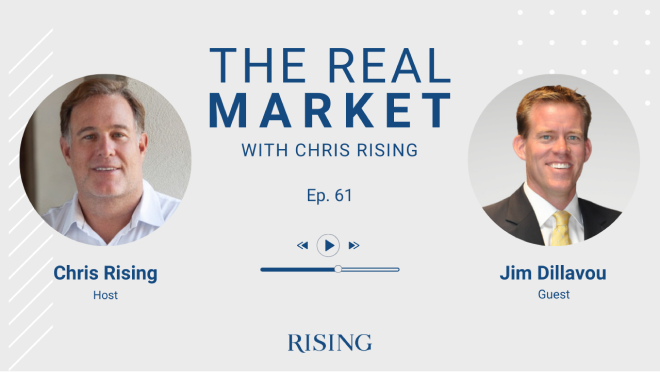
The Real Market With Chris Rising – Ep. 61 Jim Dillavou
Podcast: Play in new window | Download
Chris Rising (00:49): Welcome to The Real Market With Chris Rising. I’m very excited to have with me, an old friend, Jim Dillavou, who’s been a good friend through the years. He’s the principal and co-founder of Paragon Commercial Group, a firm based in El Segundo in the South Bay area that does a lot of different things, but really developer and retail. And we’re excited to have you on the show, Jim. Thanks for being here.
Jim Dillavou (01:15): Yeah, of course. Thanks for having me, Chris.
Chris Rising (01:17): Why don’t you give us just a little bit of description of Paragon and the different things that you do?
Jim Dillavou (01:24): Sure. So Paragon was founded in 2009, middle of the GFC to basically take advantage of the fact that nobody else in the United States of America wanted to buy retail. And so I was sitting … At that point, I had been a real estate finance lawyer at Latham in LA for a number of years. And then I had joined a public company called Regency Centers to learn the business side of real estate.
Jim Dillavou (01:52): Felt they had a pretty good handle on the legal side of it, but I wanted to learn the business side. And that seemed to me just to be the perfect time to start a company. I heard people were giving away asset, and we didn’t have any legacy stuff, because we’d been at a REIT. And so we, in October of 2009, decided we were going to start this company and start buying retail.
Jim Dillavou (02:14): So we’re focused on a very niche part of retail, which essentially used to be called grocery-anchored retail. And I now call it daily trips-driven retail, anything that is neighborhood-y. We don’t do malls, we don’t do lifestyle centers. We don’t do that. So we’re really grocery-anchored. But that could include Target, could include Walmart. It could include a lot of different concepts now that include groceries inside of them. But that’s really where our focus is.
Chris Rising (02:44): Do you do high street stuff?
Jim Dillavou (02:47): We’ve done a couple of high street deals that have turned out well, but post-pandemic, we’ll see how all that goes. But we a couple in Northern California that turned out okay. The way we justified them is we thought they were more daily trips-driven type high street. They weren’t the Tiffany’s of the world, but rather they might have a grocery store in them or a corner market in them, or something like that that drove the daily trips and got us comfortable. Maybe a drugstore.
Jim Dillavou (03:18): Got us comfortable that they were still consistent with our business and investment philosophy.
Chris Rising (03:23): Well, I know it was a specific plan to stay within what you’re doing; the grocery and the trips-driven. But boy, have you been proven, right? If this pandemic recession has proven anything, it’s that, that’s the one area of retail that is thriving. Between that and hotel, the rest of retail is, boy, just getting killed. Jim Dillavou (03:44): Yeah, it’s nice for the first time, in probably five or six years, not to be the one that everybody’s making fun of. Our bankers joke that they used to keep a close eye on us up before the pandemic. Now they are calling all of their hotel borrowers. We frankly haven’t heard from them much at all. They’ve just assumed we’re going to be okay. So rather be lucky than good, but we’ve definitely been fortunate in terms of what we’ve owned during the pandemic. And it’s performed as we would have hoped it’d perform.
Jim Dillavou (04:20): And we’re low leverage guys, so we don’t have tight DSCR covenants where we’ve been a hundred percent compliance since the beginning of the pandemic. And if we’re going to ever get out of this thing, I think it will continue to be an attractive asset class, because it’s proven its way through some tough times.
Chris Rising (04:38): Well, let’s dive into that. I think there’s a lot of people in the tech world that listen to this podcast who have a strong sense that we’re going to move everything to being online. And that even grocery shopping is going to go that way. What’s your take about the future of the sector within the retail sector that you’re in? What do you think the long term view of it is, and what’s your argument for why it’s going to be a good place to be?
Jim Dillavou (05:09): Yeah, look, I think I have always believed that e-commerce is going to grow. And it’s going to grow at the expense of bricks and mortar retail, period. That’s going to happen, but there will reach, and we are probably close to reaching an equilibrium point where successful retailers need to have a presence in both. A little bit of both. They need to find that balance. And so what has happened is for five years or seven years leading up to the pandemic, all we heard about was this retail apocalypse, right?
Jim Dillavou (05:40): That was the buzz word that everybody heard about, and it was becoming painful, because it just was this constant narrative. I think the pandemic has really just totally exacerbated that. And it’s pushed that through the system and the weak links have failed, filed bankruptcy. They will be gone. They should have been done a long time ago. I don’t think there’s anybody on a bankruptcy list in the last five years that you could ask me, “Was it a surprise that they filed bankruptcy?” And I said, “Yes.”
Jim Dillavou (06:10): We knew those people were going. They’re gone now. Retailers have been completely forced to innovate and invest in technology. And so the ones that will survive … And we take around here, when we have this discussion, we talk about Target. They’re the poster child for exactly how they should have handled the pandemic and investing extremely heavily in technology and buy online, pickup in store. And so I think there’s going to be an … You asked about groceries.
Jim Dillavou (06:41): We already see Kroger doing that. They’re going to be just fine as well. They’re investing heavily in technology. So there’s going to be an equilibrium is my point. And we just feel like if we stay at the forefront of that, and we’re doing development deals and redevelopment deals led by groceries, so at the forefront of that adaptation, we’re going to continue to be successful. And we like the fact that our space is ugly. There’s nobody running around today.
Jim Dillavou (07:06): Somebody told me that going to USC and graduating, that they were told, “You don’t want to get into retail.” I love that. Nobody wants to get into this space. And so we do see a lot of opportunities, which creates more opportunities to add value, which is we’re a value-add platform.
Chris Rising (07:24): I had a podcast earlier this week with a gentleman who was making the argument, which I tend to agree with, that the grocery is going to be there, because it’s just a part of people’s lives. At some point, you want to touch and feel, and all it takes is one bad experience with something you had come to your home, and then it’s going to be years before you go back to having someone else pick your fruit. I can’t tell you how many times we’ve ordered Instacart, and you order the salad into this, and it’s stale and old.
Chris Rising (07:52): And I know they’re trying to fix that, and it’s hard, but change it and you go back. And then the other thing he was saying, and I’d like to get your view on it is high street retail is probably going to do really well, so long as the spaces are small enough. If the spaces were designed to have a lot of inventory, that’s not going to do well. But if the space is designed to have a limited inventory, that someone can come walk in, and if they don’t have the size, they have it shipped to them the next day, that retail is probably going to work, because that’s experiential and touch and feel.
Chris Rising (08:23): But the idea of having a big gap store on Third Street Promenade makes no sense anymore. What do you think of that?
Jim Dillavou (08:30): Yeah. I think the way to think about retail is everything’s getting smaller. Because of e-commerce, it’s getting smaller. So the way I think about that is if I’m a retailer, do I want to leave a 40,000 square foot box anywhere in West LA and pay West LA rents? Or would I rather leave five to 10,000 feet and take that other 30,000 feet and lease it in Moreno Valley in a cheap warehouse? And so that’s the direction everybody’s going. Once last mile delivery gets figured out, and we’ll get there soon, that is how every retailer will think.
Jim Dillavou (09:02): “Why pay my rent for 40,000 feet? It makes no sense whatsoever when I can get same day, today or next day delivery from two hours away, which is why, as we know in LA and you know very well, last mile industrial is going to be hot for a very, very, very long time. Because all these retailers are saying, “Wait a minute. I paid Jim and Paragon 40 bucks a foot triple net to be in Woodland Hills when I can go pay $18 modified gross somewhere in Riverside. And I can promise my customer and my buyer that I can get it to their house within a day.”
Jim Dillavou (09:42): And people are okay with that. Now, you’ve got to have the storefront, because you do have to carry certain goods. And the poster child for that is obviously Amazon, who now is just opening tons and tons and tons of grocery stores in LA. And they recognize there is a value to having an experience that you can provide their customer. And so if you go to a Amazon grocery store right now in LA … And they’re opening daily. I think maybe two open yesterday. But we opened one up in Woodland Hills, which is the first one in the United States.
Jim Dillavou (10:16): They can do three things out of that same footprint. You can go in there and shop, like you would in a traditional grocery store. You can also order online and you can pick up there within one hour. You pull into the spot, they know your phone’s there. They bring it out and drop it in the trunk, or they’ll deliver it in two hours. So there’s three different … They’re using the space much more efficiently than any grocery store where you just walk in and buy it. They’re doing a number of different things out there.
Jim Dillavou (10:37): And so they’ve run the model and determined that they can increase … And by the way, they locate their stores largely based on their Amazon Prime membership, because that’s the crossover that they’re looking for. So they have the data already. So they’re not going to do an unsuccessful story. They know exactly where they’re putting them. So when you look at this integration of technology in bricks and mortar, there’s an equilibrium there. And so, it’s actually super exciting.
Jim Dillavou (11:02): We do a ton of due diligence, as I know you do on your tenants, on how much they’re investing in the technology. Are they just giving it lip service? Are they actually putting real dollars into technology? And is that showing up in their stores? Are they able to translate that to customer experience? And the cool thing with retail is, and Chris you know this as well as everybody, it’s very basic. This is not brain surgery. We can all sit down and take a deep breath and think, “Okay, how is my retail experience today? Where did I go? Did I enjoy it? Was it difficult? Was it a pain in the ass to return it? Was it easy to buy it?”
Jim Dillavou (11:37): This is very basic stuff. And so when you unwrap all of the real estate stuff, it’s pretty basic stuff. But the evolution of it is probably the most exciting part of it, because it’s just moving very quickly.
Chris Rising (11:50): Yeah. Let me ask you on the Amazon stores, these aren’t Seattle stores where you don’t touch anything, right? Or you don’t pay for anything. You can just walk out. These are whole food minis, smaller versions of whole foods?
Jim Dillavou (12:03): Yeah. It’s a good question. So what you’re referring to is the Amazon Go concept, and it was advertised as having to just walk out technology where when you walk in, it scans your phone. It knows you’re there. You pick stuff up and then you just walk straight out and it bills your phone. What they’ve done is they’ve taken that technology and they have applied it to their Amazon Fresh, which is the name of their grocery store concepts which is generally around 40,000 feet.
Jim Dillavou (12:28): And so they actually do have that technology. Now, what they learned from the Amazon Go beta testing is that not everyone’s comfortable with that technology yet. So they have both options right now at the grocery store. You can use the Amazon Go technology. You can walk in, you can shop and you can just walk out. Or if you want, you can go through the …. They do have checkers that check you out. In fact, they’ve taken it one more step, which is super cool, and it’s fun to do on a rainy day in LA.
Jim Dillavou (12:52): If you’re bored, go to one of the Amazon and test out their carts. And what you do is the cart itself weighs everything. So if you’re buying some bananas, you said, “I’m married,” it tells you how many bananas you’re buying. You set anything in a cart, it scans it when it goes into the cart and it keeps a running tab of what you’re buying right there inside the cart. When you’re done shopping, you can literally walk straight out of the store and it bills your phone.
Chris Rising (13:16): Wow, that is amazing.
Jim Dillavou (13:17): It’s fun. It is cool, and they’ve been highly successful with their openings in terms of sales per square foot. And so I think they’re going to continue to see the value in having that bricks and mortar presence. Chris Rising (13:32): Are they just so far ahead of Walmart and Target, or are those companies and similar companies biting at their heels?
Jim Dillavou (13:42): I think they’re biting at their heels more now than they have been. They were definitely behind. Because Amazon leads with technology. That drives every decision they make. And when you get to the grocers, they had this clunky historical business model that led the discussion, and they brought in the technology to augment that. They’ve now flipped that. It took them a year or two. They’ve now flipped that where you asked about Walmart and Kroger, those guys are now leading with technology too.
Jim Dillavou (14:12): And so we’ll get to a point in the next few years where they’re all caught up. And your shopping experience, whether you’re in a Kroger or an Amazon, it’ll be very similar.
Chris Rising (14:24): How has your acquisitions criteria changed in the last 12 years since you started Paragon? How has it changed because of this influence of the Amazon mentality and technology?
Jim Dillavou (14:43): As you know from being in the business, there’s always opportunities to change your business model. People are always trying to convince you, “Hey, Chris, why don’t you go build a multifamily group? Why don’t you go build a …” You name the sector. We have absolutely and intentionally just remained totally consistent on what we invest in. And that’s because that’s what we think we know. We think we’re pretty good at it, and we think we know it. And so we’ve stayed very consistent.
Jim Dillavou (15:10): 10 years ago, our, our model was development and redevelopment grocery-anchored neighborhood retail. And right now that’s our model. There’s obviously nuances and things that have changed within that. But for the most part, we’re talking about your grocery-anchored neighborhoods … Now, those boxes have shrunk, right? So we bought a lot of … Let’s take 10 years ago per your question. Grocery stores used to be 50 to 60,000 feet. Now, grocery stores are 35 to 40,000 feet. So everything is shrinking.
Jim Dillavou (15:44): For a while, we had the discussion around everything was always about parking. You want to have these big fields of parking in these neighborhoods, because everyone had cars in LA 10 years ago. And the more parking you had, the better your center was. That’s now flipped on its head. You don’t need that much parking. The less parking you have, the better. Cities want to encourage people not to park. We had an interesting entitlement moment a couple of years ago.
Jim Dillavou (16:09): We were entitling a project in Northern California and a project in Southern California, both grocery-anchored shopping centers. And the city of Northern California was saying we couldn’t have more than two per thousand parking at all. They wouldn’t entitle it. And the city in Southern California was saying we had to have more than four per thousand parking, or they wouldn’t entitle it. This was happening at the exact same time they were having opposite discussions.
Jim Dillavou (16:32): So there’s a lot of debate about that. And so the only reason parking’s important … And it’s not. It’s boring, but the reason it’s important is we’re talking about land. Every square foot in a parking spot is a square foot that I could otherwise lease for income. And so the more parking spots I have, obviously the less leaseable square footage I have. So it flows through to the pro forma and the NOI and the eventual value of the asset.
Chris Rising (16:56): And you’re talking about two different parts of California. What geographic markets do you focus on?
Jim Dillavou (17:03): So we’re West Coast focused. We are heavily in California right now. We have a few funds with CalPERS as part of our platform. Those are West Coast, including Oregon, Washington. And we could go to Arizona. We have not done that. We’ve remained hyper-focused on basically the major markets along the West Coast. So we’ve not expanded from that.
Chris Rising (17:28): And we’ve always been West Coast focus too, but now our West Coast, at least for industrial, includes Texas.
Jim Dillavou (17:35): Exactly.
Chris Rising (17:36): There’s so much happening in Texas. In our view, you can’t not be in it, especially in industrial. So have you looked at expanding in Texas?
Jim Dillavou (17:44): We’ve definitely looked at … Let me back up. What we tend to do is follow our retailers. So when we find a retailer we like who’s expanding, we try to just create that relationship with that retailer, because we want to make it easy for them too. If they want to go roll out 50 stores, we obviously want to be their first call. So we want to be fair with them every step of the way and transparent with them every step of the way.
Jim Dillavou (18:11): So if they say, “Hey, Paragon, we’d love you to go build 20 stores for us in Texas,” yeah, we would go do that. Right now, the way that retailers typically break up their country is they’ll have a West Coast person. That person usually handles Hawaii, California, Oregon, Washington, maybe Arizona, maybe Nevada. And then they have other people handling the rest of the country. So because our relationships get built with those people at the retailers, that’s generally who we do business with.
Jim Dillavou (18:42): So it’s not that we don’t want to go to Texas. We’re looking at some stuff in Utah right now. Every once in a while, someone will have us take a look at a project in Arizona. We won’t say no to those markets, but what we know about retail developers … There’s good retail developers in all of those markets. Retail, I will argue, is the most location-specific product type that exists. And so if I’m going to Statesville, or I’m going to Austin, and I’m going to Houston, I better know what I’m doing.
Jim Dillavou (19:13): Because I guarantee there’s 10 or 20 developers in those markets could know that market better than I do. And so I better have a tenant. And so I better have a lease signed. I’m not going to take a lot of risk in those markets, because I’m not the smartest guy in those markets. And I feel like in California, we’ve built 12 million square feet here. We know the market pretty well. We know the corners pretty well. And we also know that … You can just see this and your audience can see this just driving around in LA.
Jim Dillavou (19:40): Think about it next time you’re stopped at a signal, but if you pick the Northwest corner to build a shopping center and really you should have picked the Southeast corner, that can be the difference in retail is you just got the wrong corner of the intersection. And so it’s very, very specific. So we get nervous when we go out of what we know, but we will do it if we’re partnering with some of our retail partners.
Chris Rising (20:03): That makes a lot of sense. Let me ask you this. We’ve been pushing very hard in the impact area and the carbon reduction and things like that. I know your tenants, Amazon and others have made big pledges about this. Has that affected your costs and how you underwrite development, and is it a big focus?
Jim Dillavou (20:22): Yeah, that’s a good question. 10 years ago when we all started talking about LEED certification and studying what that costs and what that means, what’s effectively happened is with the California Green Building code and city codes, is that pretty much now everything has to be Gold LEED certified or pretty darn close to it. So we effectively assume every project we build needs to Gold LEED certified. What we found is … And one of my partners was actually running the sustainability efforts for public REITs. So he’s pretty deep into this.
Jim Dillavou (21:00): But what we found is, oftentimes, those elements, whether it’s green roofs, whether it’s electric vehicle charging stations, whatever it is, they actually end up saving you money on your project, long-term. They don’t end up costing you money, which is completely counterintuitive than how I thought about it 10 years ago. But the industry has come around, and the technology has come around, and the costs have come around so much where it’s actually cheaper to do it.
Jim Dillavou (21:27): And you still get points, if you will, from investors, from lenders, from cities for doing the “right thing.” So we’re all in on that when that opportunity arises, because we found that actually not only benefits us in the environment, but it benefits our project and benefits the city. It’s come to the point where it’s a win, win, win, win, win all the way around. And we do do that.
Chris Rising (21:49): I agree with you. We found with our investors … And there’s a lot of negatives about California. There’s no doubt, but one of the positives is that we build to a standard. You want to build in Utah, and you want to build in Denver. We got some pushback in Denver when we bought a building there and did some of these things. And what we commonly tell people is this really does save you money. And the other thing is, you’re building a building or a project to be used for the next 20 years, not the last 20 years.
Chris Rising (22:16): So, don’t you want to have the technology that can meet that for the next 20 years? And I hope it becomes less of a political football, because it’s just smart building. If you took away the environmental stuff, and you say you’re going to build a 21st century project, this is the 21st century materials and systems. And why would you put in a 1985 one? It doesn’t make any sense.
Jim Dillavou (22:38): Well, I think the answer to that is private equity. If your hold period on these assets is three to five years, I think it’s tough to go convince a partner to spend a little bit more money. Because that cost recovery is probably not going to happen in that three to five-year period. It’s probably going to happen more like in 10 year period. And so just the nature of the capital that’s put into these, I think that’s where that friction point is. We try to … Our CalPERS stuff is traditional investment horizon; purchase, build and sell.
Jim Dillavou (23:10): That’s about half of what we do. The other half of what we do is hold for 20 years. And so it does affect our view on how we’re going to invest in these projects. We’re going to hold that project for 20 years. And especially in the retail business, which seems to be changing every 12 months, we better think very creatively about how we’re designing that space, because more than likely, in 20 years, we’re going to be redoing that space.
Chris Rising (23:35): Yeah, that’s very true. I think that private equity is being pushed by their investors now. There’s a real push saying, “You have to think about this. Our pensioners care about this.” On the technology change and how things change so quickly, office and to a certain extent, multifamily has really been pushing into modular, pushing into trying not to have walls and move things. Are you seeing that in the retail space too, that not trying to have very static walls, so you can expand and contract, depending on the needs of the tenants?
Chris Rising (24:14): Or is it, in that regard, still the same business? Once you build the building, it’s very tough to change it?
Jim Dillavou (24:19): No. That’s actually a topic that’s significantly interesting to me. I have said for the last few years that we’re not really in the retail business anymore. We’re more in the space business. So when we go design a project, we know … Because we don’t know what retail is going to look like in 10 years. We just don’t. We think we do, but we may or may not be right. So what that means is we’re going to find a good retail location, which more than likely is not going to change in 10 years. But what’s actually built on that site probably will change in the next 10 years.
Jim Dillavou (24:52): So it is counterproductive for us to go put those walls in one spot that’s going to cost us a lot of money to move them in five years or 10 years versus building a much more flexible design. And we’ve seen projects in LA already. Platform, Culver City, for example, which at the time it was built and opened, it was one of the foremost thinking retail projects in LA, where they built big spaces and they brought four or five retailers in to share a space.
Jim Dillavou (25:23): There’s a guy selling furniture next to a guy selling soft goods next to a guy selling smoothies, but there’s no wall. Now the walls, they open and close at night, but it’s just one big space. And I think that’s just the direction we’re going. They have ultimate flexibility on that building on making those spaces 700 feet or 1,500 feet. And I think eventually, we will get to that point, because it is very expensive to take down those walls and move those walls and change the sprinkler systems and change the gas speeds and change all the things that every time we return to the building, we have to change.
Jim Dillavou (25:58): So if there’s a more efficient way to do that, we need to be looking at that. So there’s not a lot of that going on right now is the answer to your question, but I do think we will be seeing more of that. And I think the architects need to probably … Especially the ones that specialize in retail, which is frankly fewer and fewer, but they need to think a lot about that and think about designing flexible projects.
Chris Rising (26:22): I think the biggest frustration beyond the architects is just the city building codes are so far behind. And so you’re getting a big push from public employee union money and all of that to go this way. But the building codes are just … We’ve tried to do some things here in the city of LA. Whether it’s battery instead of diesel generator, and we’re finally, after five years, getting there, but way behind. And so I think in an office, and I think retail is the same, you got to have more flexibility.
Chris Rising (26:51): And then you get into these codes with a door has to be here, and this far away from the exit, and all that, you lose a lot of your flexibility. And a lot of that lifesaving stuff that they’re concerned about is from a different era too. And so I don’t know what … I think government will lag no matter what, but the frustrating thing I think as a developer is that we see where we should be going. And we’re being held back by the building codes. I say this all the time. The most powerful person in any city is the fire chief. Right?
Chris Rising (27:24): Because they can shut me down or anything. “Life safety is on the line. Sorry, you can’t do it.” So there’s an education where hopefully a ULI can be helpful. I wanted to … Maybe that’s a good segue. Just you and I see each other on airplanes and different cities and you’ve been a very active member of the Urban Land Institute. Can you talk a little bit … In a world where we don’t have conventions right now and questions people have about us ever going back to a city to have a convention. Can you talk a little bit about ULI and your experience with ULI and why it’s important?
Jim Dillavou (28:01): Yeah. I’m currently the chair of a Small Scale Development Council. And so we have about 50 developers our size from across the country on our council. The value I see in it is just the candid sharing that is obligatory on our council. We don’t allow people who are selling anything, and we don’t allow people who are disingenuous, because our time is limited. We’re all busy. And if we’re going to commit that time to each other, we want to be extremely transparent.
Jim Dillavou (28:39): So who is screwing up deals? How are they getting screwed up? I always say … And I’ve been quite successful in this. I’d rather hear a case study about a failed deal than a successful deal. We’ve all had successful deals. That’s not that interesting. Failed deals are way more interesting to me. And I will never forget, in 2010, I was sitting … I think it was 2010. I was sitting at the ULI conference in Miami and I listened to a 45-minute presentation from a condo developer who put his pro forma up on the screen and went through it line by line.
Jim Dillavou (29:13): And everyone in the room was nodding, “Okay. That makes sense. That makes sense. That makes sense.” And then he proceeded to explain how he lost everything in that project and he filed personal bankruptcy. His wife ended up leaving him. He ended up … Basically, he had nothing. And I sat there and I was taking notes as fast as I could. That was the most informative presentation I’d ever heard. And I learned a ton of stuff from it. I actually ended up following up with the guy later, because I had so many questions.
Jim Dillavou (29:41): But that’s way more interesting to me, especially if everyone’s being very candid with one another. So that’s the value I get out of it. Clearly, that network is great too. And we all on our … One of the reasons I love small scale is we have the ability to pick up the phone and call each other at any time and bounce ideas off each other. And so that’s the reason I love it is I get to hear from guys in North Carolina developing buildings in the port and telling me what the port’s doing in North Carolina versus all the guys in Texas.
Jim Dillavou (30:15): I put out guys in Utah and guys in Detroit. And so just using those as benchmarks and data points in my own thinking and how California is different and maybe we need to get out of California. Maybe we need to look at other markets, and what are people solving to from a return on cost standpoint, ground up in these four markets and how’s that different from a risk adjusted basis in my market? So that’s really where I see the value of just those relationships.
Chris Rising (30:41): I think it’s great. I started this podcast, because I was getting frustrated at the cost of conferences and not being able to have my younger people in the company go hear from people like yourselves. And so that was the purpose of it. And I’ve seen this cottage industry grow up. I was on a … First time I’ve done an Instagram live yesterday with Sean Fulp of Newmark. And I’m on clubhouse, and I see all these young real estate people wanting knowledge. And so on a Sunday, I jumped on a clubhouse and did the best I could to be helpful.
Chris Rising (31:12): But what’s missing out of all of those things is that trust that ULI gives and that confidentiality to the point that someone will be honest. So I really appreciate you sharing that. I believe the world will come back, and we’ll get on airplanes soon and see each other, because this is how you learn … I’ve learned to be successful by my failures, but also by watching other people’s failures. And I think it’s important. I’m so tired of this culture of, “I achieve all the time, nothing but big things, and I’m always successful,” because that’s not life.
Chris Rising (31:46): This has been a humbling year for me. We had a project go sideways that I deeply believed in, and we didn’t do anything wrong. We just didn’t expect the Spanish acquisition.
Jim Dillavou (32:03): Look, I think the other piece of this is there’s a lot of people in our business who are full of crap. And so they’re not willing to share with the folks you’re talking about in your office, some of the younger people trying to get into business. They’re willing to tell them about all their successes and “Here’s how much money we made here, and here’s how successful we are here.” But we need to talk about how hard this business is, because I think there’s this perception that all you do is you get in the real estate business and you just start making money.
Jim Dillavou (32:36): So I think there just needs to be more discussion around, what the risk? So when people say real estate is risky, what do they mean? For every deal you do well, how many deals don’t go well? How do you mitigate those failures? What happens when in the middle of the deal your anchor tenant, a week before you start construction, says, “We’re not going to open for a couple more years?” That stuff happens all the time in all this-
Chris Rising (32:58): Yes, it does.
Jim Dillavou (32:59): But that’s not the stuff that gets the coverage. That’s why I try to push our ULI council, back to your ULI questions, “Share that stuff.” And I think our counsel’s really, really good at that. And so that’s our value. But Chris, I think you’re a hundred percent right in terms of getting that information out there. And it’s good that you do this podcast. We’ve actually converted our … But I’ll tell you on your comment about getting back to meetings.
Jim Dillavou (33:28): I can tell you that our ULI council, just as an example, and any other organization is not as strong right now, because we haven’t met in the last year. Period, end of story. And I’m the chair, so that’s my fault. But I can tell you that any other organization that I’m a part of right now is not as strong now as it was 12 months ago. And I don’t care how many Zoom calls you do and the “We’ll meet once a month on Zoom with our council and we’ll talk and we’ll share stories.”
Jim Dillavou (33:51): It’s different when you’re shaking hands, sitting down, having a beer, having dinner, sharing stories. That’s the value. So I agree with you. That will come back, because that has to come back. Because none of us are as good now as we were 12 months ago. We have less data. We have fewer stories, have less … So as soon as that door opens, I think everyone in the real estate business and mostly all other businesses will have jumped through it as fast as they can.
Chris Rising (34:18): Yeah. I really agree with you, I think. I was having a conversation today with a private equity person, and I think it’s an easy answer to say that, “Well, we’ll still do some of our meetings on Zoom and we won’t travel as much. And business hotels are probably going to be slow.” And both he and I have said, “No.” I think the second we all feel safe, I’m going to go to New York and get in front of these people. I’m going to go to these places. And it’s been a life-changing experience for all of us, and I’m not naive.
Chris Rising (34:51): I think our work hours are different. I think our expectations of what calls should be or a Zoom and all are different. I will tell you, I think they should pass a law that any call that was a conference call before COVID should still just be a call, not a Zoom call. I don’t need to see everybody all the time. But-
Jim Dillavou (35:11): Agree, agree.
Chris Rising (35:15): Let’s talk … Since retail is so sensitive to social media, have you seen changes around what retailers want to be able to do with their physical space, so that it meets what they’re trying to do in their social media marketing? I am amazed about things like clubhouse. I’m amazed about Twitter. I’m seeing people raise money now in ways that I’m sure you would go to jail, but now you don’t, I guess. And they’re using Twitter to say, “Here’s my track record.” So if that’s happening in the real estate space, I can imagine your retailers must becoming back to you and saying, “We need X, Y, and Z to be able to execute on our tech strategy.”
Jim Dillavou (35:56): The manifestation of that in our business is that we are probably building more raw shell than we are finished shell right now, because those people want to control their tech packages and they want to come in and do their own TIs, because it’s so … First of all, it’s changing quickly. And so they never know what they want to build. All they have to do, they’re going to build it. Second of all, they want to keep it proprietary a lot of the time, because they it as cutting edge.
Jim Dillavou (36:26): But they’re actually taking more off our plate as a developer. Whereas they might want us to come in and not only build the shell, but also do the demising and build the dry walls and then fill the dry walls with a certain standard, [inaudible 00:36:38] technology. Now, they’re saying, “No, no, we want to do that.” And in our business, the direct answer to your question is, that’s happening right now. That’s real-time, what’s going on, but that’s in the middle of, everyone’s trying to figure that out, how to make those two worlds seamless.
Jim Dillavou (36:58): So that’s one way it’s manifesting. The second way it’s manifesting itself is in the physical design of the shopping center. So for example, every center we build now, if you’re putting a Target in it, you’re going to have to have 10 to 20 pickup spots next to a certain door on the side of the Target, where inside, they’re going to merchandise it such that their back of house feeds into this door. So you can buy online and pick up just by pulling up in front of the store.
Jim Dillavou (37:30): Electric vehicle charging stations are standard now in all of our deals. But I think retailers are seeing traffic flow differently in the center. So they’re looking at laying out their building a little bit different. They’ve become very efficient at changing their design inside. Right? So to your question about social media, if their internal social media push out a retailer is for a certain number of products, they’re going to display those products in a certain location inside that box, and maybe make you walk by some other products that you may also be interested in, based on the fact that you’re interested in this box.
Jim Dillavou (38:06): They’re down to that level of granularity in terms of how they’re taking that social media presence and translating to the store sales. There’s a lot of information about all this, but what they found is that they can … And I guess it goes back to your first question on this call is, if they can get the consumer to come in the store, they’ve found that they’re going to buy 30, 40% more than they would if they just bought it online. So that’s, “Okay, well, we’ve got to figure out a way to get them in the store.”
Chris Rising (38:39): There’s a few jokes in there or not. Wouldn’t be correct anymore, but I’ll just say for me, I’ve never once gotten into a store with the one thing I wanted coming out.
Jim Dillavou (38:48): Right. That’s exactly right. But no, that is what they’re all wrestling with right now, which is, first of all, what social media outlets to use. And that depends on who their consumer is. So you’ll see some that are all in on TikTok right now. They don’t even use Instagram and Facebook anymore. And Facebook’s like Myspace right now. That’s all. So these guys, they’re literally advertising on TikTok. And then product placement, we can talk all about that stuff.
Jim Dillavou (39:18): But they’re figuring out how to take that side of the business and make it work with the store side of the business, which is … So with that in mind, next time you go into a retailer, … Every time you go into a retailer, think to yourself, “Okay, what interactions did I have with that retailer online? And how is that affecting the fact that I’m standing here on the threshold of walking into the retailer, and then how much did I walk out with, which is what I went in to get? And you’ll start to become conscious of how all that works.
Chris Rising (39:49): I do want to move a little into technology and you being a co-founder. But before I do that, I’ve just got to tell you a funny story. About a year ago … Actually, it’s now been two years ago. I feel like 2020 didn’t happen. Two years ago, I was at a tech conference. And a Chinese tech investor got out … Maybe it was three years ago for now. Because it was the first time I’d heard someone talk about TikTok.
Chris Rising (40:13): And they said, “Hey, this is going to explode. If you don’t know about it, your kids know about it.” And I remember coming home and telling my … I have two 15 and a half year old daughters. At the time, they were probably 13. And I said, “Hey guys, have you been on TikTok?” And they screamed, “You cannot get on TikTok. You’re too old for TikTok.” And I was humbled then. And even today, my daughter will be cooking something, and I’m just like, “Where did you learn that?” “Oh, that was on TikTok.”
Chris Rising (40:40): And I’m like, “God, this is unbelievable.” So I am officially too old. But I’ll switch a little bit. You have kids similar in age to me, and you’re a co-founder of a business. You and Mark found this business. So that means everything lies on your two shoulders. How do you mix shutting off with running a business that all of our businesses basically run 24/7 now?
Jim Dillavou (41:08): I’m not good at that. I don’t have a good answer for you. I’m not good at shutting off. The way I … There’s a reason that since the beginning of the pandemic, I’ve come into the office every single day. And it’s because my wife’s like, “Get out of here.” I don’t shut off at all. It’s a 24-hour job. And I don’t mean I’m out doing real estate deals 24 hours, but there’s an HR component. There’s a capital raising component. There’s a planning component. There’s a structural component.
Jim Dillavou (41:42): At some point, you’ve got to sit down and actually look at what you own and where can you … Do you want to reduce costs? Where can you do something like that? The business side of it too. So there’s really never a time there hasn’t been … It’s a great thing, and it’s a bad thing. The bad thing if you look at it like that is you’re never shut off. The good thing is, there hasn’t been a single day since I started the company in 2009 that I haven’t been super excited to go to work. Every single day, I am excited to go. I’m a 5:00 AM guy. I’m up at 5:00 AM.
Chris Rising (42:14): Wait one sec. You do sign personal guarantees once in a while, don’t you? There’s some days I wake up, I go, “Oh my God, what did I get myself into? So much easier being a broker.”
Jim Dillavou (42:26): Yeah. We have done a good job of not doing that. We’ve just moved our leverage point down and did that analysis at the beginning and said, “Maybe we’ll make a little bit less money by putting more equity in and not signing guarantees.” But no, every day is … And I think the reason it’s exciting is every single day … First of all, it’s not like I ever think it’s going to be. It’s always different. I never know what direction they get pulled in. And constant challenges.
Jim Dillavou (42:56): Constantly trying to solve problems, which I really, really enjoy. And we keep our company small. We don’t want to grow much more than 10-ish people. We used to run a company with 65 people. We decided at 10 to be super quick and super nimble that we can get a bunch of really good consultants and pay them well, and they’ll act as our in-house people. And so we’re quick, we’re nimble. We want to stay small, but that means that every single person has to be running a million miles a minute, 24 hours a day if we’re going to keep doing what we’re doing.
Jim Dillavou (43:30): Thankfully, we have great people. They work extremely hard, and everyone loves what they do. And you can tell right away if someone isn’t into it, because they’re not going to put that blood, sweat, and tears into it. Back to your earlier question about ULI and young kids and real estate and founding the company, I think that people think, “Oh, to start a company, you start a website and you form an LLC and you’re done. You start buying real estate.”
Jim Dillavou (44:02): One of the most interesting experiences I’ve ever had in my life was starting a company when I left seven years of being a real estate finance lawyer followed by a couple of years of being in a public REIT. Starting my own company and sitting in my first meeting and having the private equity guy say to me, “Well, what have you done?” I said, “Well, we’ve built six million square feet.” And he goes, “No, what have you done? What have you done?” “Well, I was at a company. We did …”
Jim Dillavou (44:25): “No, no, I want to know what you did.” And so we started. We had to literally build six, seven million feet. We started from zero, because they said, “I get that you were at a company that did that, but now we’re talking about you.” The other story that I tell is when I started the company, I told my wife, I was like, “Yeah, we should be profitable in 12 months.” So month 12 comes, we’re not. 13, not. 14, not. First check we got was month 20. The first time we made money was 20 months after we started the company. And so two things came out of that.
Jim Dillavou (45:06): I’m glad that my wife trusts me, because otherwise she could have been gone. And two, you have to plan accordingly. You have to make sure you got 20 months, and I had three kids. We were actually building our house at the time. And you’ve got to … But I was so committed to this. And I told her this. When we started the company, I said, “I’m going to be gone for a year. I’m going to go to work for a year. I’m going to be gone before you wake up, and I’m going to come home after you’re asleep. And I’m going to work seven days a week. I’m not going to be home on weekends. I just need one year. Give me one year to start this.”
Jim Dillavou (45:40): And I said, “And then I’ll fall back into the family.” Our kids were young, and I said, “I’m gone.” And so I did. And I took that Latham & Watkins work ethic, which you’re familiar with from being a lawyer. I was a big firm lawyer is I took that work ethic and I realized, you get in the real estate business, and some of that work ethic is sometimes lacking. So that’s my competitive advantage is I can work harder than anyone. I’m okay putting 18 hours a day in. It doesn’t bother me in the slightest.
Jim Dillavou (46:04): So I figured if I can do that, I can basically put in double as many hours as most people do. Therefore, I should theoretically be able to make money sooner. That may not have happened, but-
Chris Rising (46:15): I don’t buy that you were taking Saturday and Sunday off. That’s just my … I think you’re probably still seven days a week. Let me ask you this. To have a small group … By the way, that’s a great story and it’s one I share. And when young people asked me for advice, I said, “You’ve got to own your track record when you’re at another company.” Because we started to raise money and that took the company from a $400 million market cap to 5.8 billion. All they could ask is, “Well, what was the IRR on every deal?” And they didn’t care.
Chris Rising (46:46): They cared about the return on cost. That’s all I cared about. Doesn’t mean anything. So I tell young people, if you’re at a place, I know this will sound stupid, but go and say … If you’re at a private equity place or something, “I want to be able to own this track record for me.” And they’ll probably tell you no, but at least stake your claim, because it’s hard to start a business without a track record. But to be able to have a smaller company that uses consultants, you must use technology very efficiently.
Chris Rising (47:10): Everybody’s very interested on this podcast about, do you guys use Microsoft Teams? Are you guys using Salesforce? What’s the technological background that allows you guys to function in 2021?
Jim Dillavou (47:25): Our whole model on everything we do from soup to nuts is simplicity. Real estate is a complex enough business where you don’t need to make it more complex by having complex systems. So I run all of that part of the company. And every decision I make is, is this efficient and simple? Do we want to run a billion dollars of real estate with 10 people? You sure better be efficient. So we don’t do anything fancy other than make sure that every step of the way, if there is a way to …
Jim Dillavou (48:00): And I guess I’ll give you an example is when we started the company, we had an old school server room. And we got a server and we built the server and we had an IT guy and we ran everything through a server and that was the way to do it back then. Then we realized, “Wait a minute. This is actually not the most efficient way to do it at all. This is terrible. When the server goes down, the email goes down and the back office goes down.” So then we quickly pivoted everything goes to the cloud.
Jim Dillavou (48:30): And then we have our back office systems, which are, I think, industry standard. So we’re not super technologically savvy other than making sure that everything we do from every computer or laptop we have all the way up to every communication platform we use is just very, very simple. And so that’s the short answer.
Chris Rising (49:01): Yeah, and I think that makes a lot of sense. I think the world is dividing itself up to, you pick an operating system and that’s part of your identity and that’s how you work. Has there been any demands from your investors? Whether it’s reporting. Is there a certain software that you need to use? Are you still old-school sending PDFs or things like that? How do you communicate with CalPERS and people like that?
Jim Dillavou (49:28): Now, CalPERS definitely has their requirements, but there’s only … In our business, there’s two or three dominant software that everyone uses. And through CalPERS, we actually report up to Canyon and then as part of this program we are in, Canyon rolls everything up to CalPERS. And so there needs to be an efficiency there. So they’ve implemented some very good systems. We have to, of course, follow those systems. It’s evolved from Excel spreadsheets into uploading to portals.
Jim Dillavou (50:09): And it’s going further and further in that direction, but thankfully, I don’t have to get involved in too much of that. Chris Rising (50:18): Well, there’s a lot of tech people who listen to this podcast who are going to be banging at you, I’m sure, saying, “We’ve got the right answer,” but-
Jim Dillavou (50:26): Look, I love the conversation. I love learning about it. So call me.
Chris Rising (50:33): We’ve gone for a good amount of time, and I really enjoyed, but I think one of the things I’ve always liked about you is how open you are and how honest you are to talking to people. For a young person who’s coming out of college today in their early 20s or something, what advice would you give them even as far as, do you need a secondary degree? Or what would be your advice to someone who says to you just blankly, “I don’t really know what I want to do, but real estate looks really interesting?”
Jim Dillavou (51:00): Actually, like you, I get that question a fair amount. And I guess I try to always answer it with, there’s no way for coming out of college to know what type of real estate you want to be in. You don’t know if you want to be an industrial guy, you don’t know if you want to be a multi-family guy, retail guy, an office guy or girl. And you also don’t know, within that, what you want to do. Do you want to be a broker? Do you want to be on the equity side, the debt side? Do you want to be on consultant side?
Jim Dillavou (51:30): So there’s so many different levels to that question. I actually say, the best way to get exposed to all of that is actually to get into brokerage or getting involved in a platform where you’re exposed to as much as you can. Maybe it’s private equity. That’s fine too, but just to expose you as much, and you will quickly decide which you’re most interested in and passionate about. Once you’ve narrowed it down to figure out what part of that you’re most interested and passionate out, then you can begin to focus in on it.
Jim Dillavou (52:03): And that is the time to take risk. It’s not when you’re 40 and have a bunch of overhead and three kids. That’s not the time. The time to take risks is when you’re younger. And I know you want a paycheck. I know you want to get a W2. I get it. I was there. I went to law school. I had hundreds of thousand dollars of student loans. I get it. I said, but you’re never going to be as untethered as you are right then. And so if you are passionate about something already, you already know what you want to do, then give yourself a time horizon, 12 or 24 months or whatever you can afford to just go do it.
Jim Dillavou (52:40): Because in our business, one thing I’ve learned is that the people who are most passionate about what they do are the most successful. Because they’re passionate about it when they’re 20 and they’re passionate about it when … Your dad is passionate about what he does to this day. And he hasn’t needed to work in a long time, but he is absolutely passionate about what he does. He does it because he loves it. If you get into that, if you find the right niche in real estate that you’re passionate about, I guarantee you will be successful.
Jim Dillavou (53:06): Because you’re just going to keep going, and you’re going to get it done. You will figure out a way to make it work.
Chris Rising (53:12): In a very cynical world we live in where some people challenge the, “You’ve got to love what you do,” take, I like your take much better. I think you have to love it. Otherwise, there’s other careers out there. But in real estate, you’ve really got to love it. And there’s so many things we don’t control. You don’t control if the tenant’s going to come to you or not. You just don’t. You do everything you can to mitigate the risk, but you don’t.
Chris Rising (53:36): This has been a great conversation, Jim. It’s good to see you. It’s been too long. I can’t wait to have a beer or a glass of wine with you. But thanks for being on The Real Market. I really appreciate it.
Jim Dillavou (53:44): Yeah, of course. Yeah, of course. Happy to be here.
Chris Rising (53:48): Thanks, Jim.
Speaker 1 (53:50): And please, don’t forget to follow us. We’d really appreciate it if you subscribe to the podcast. You can do that on Apple iTunes or any of the other podcasting services. It’s The Real Market with Chris Rising. And follow us on Twitter @ChrisRising or @RisingRP. And please follow our blog, chrisrising.com or risingrp.com. Thanks so much.

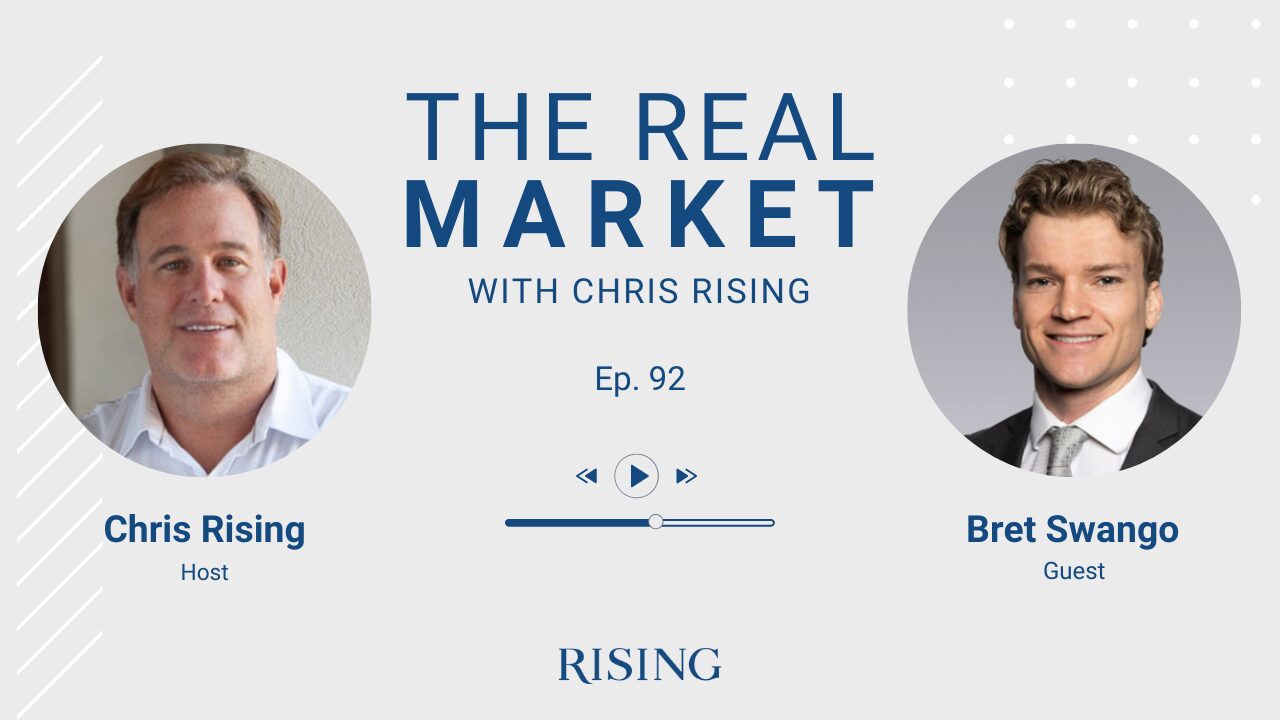
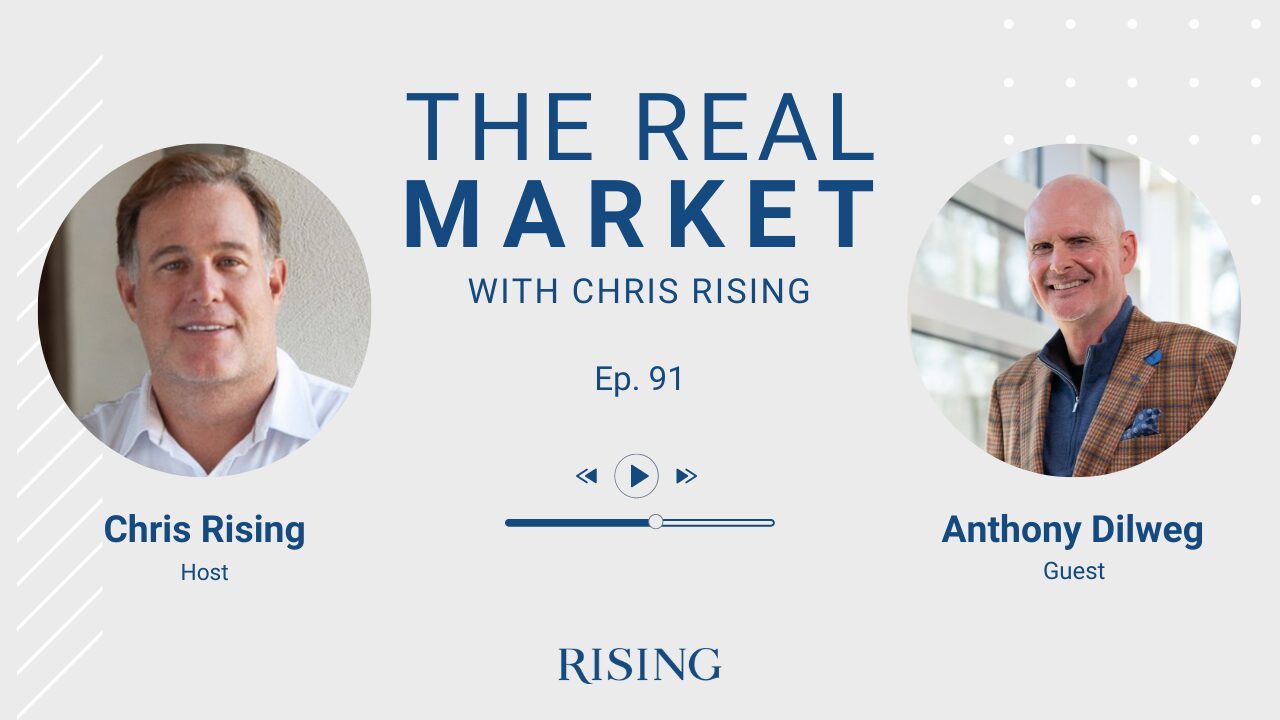
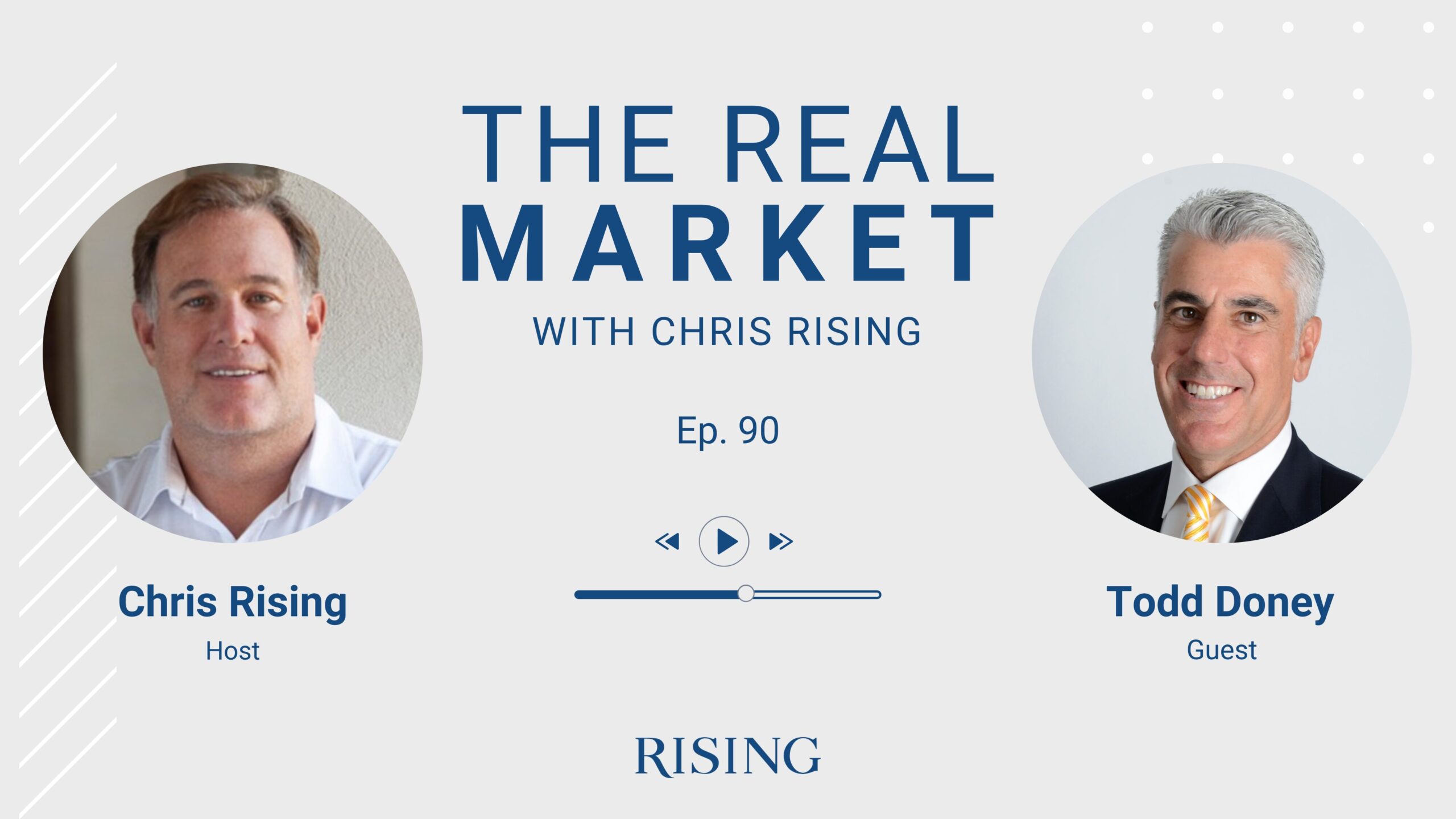
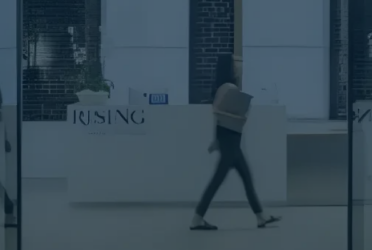
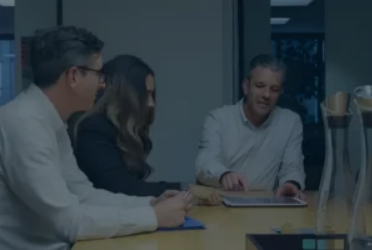
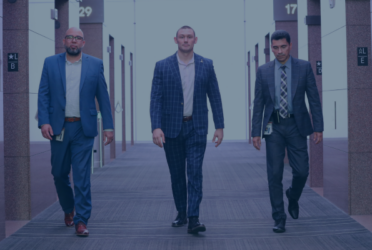
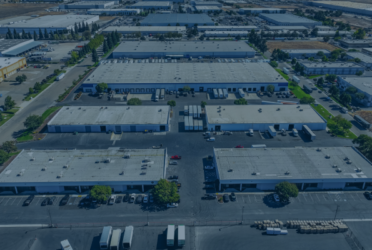
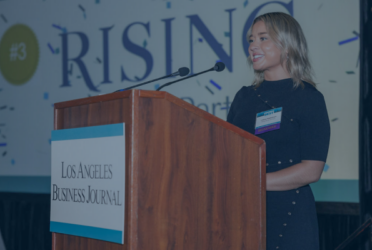
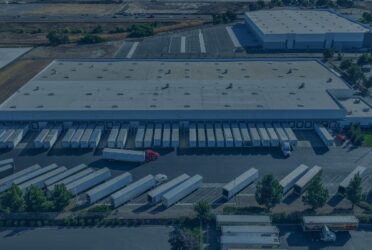
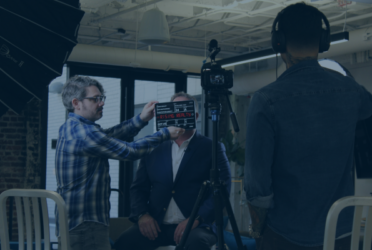
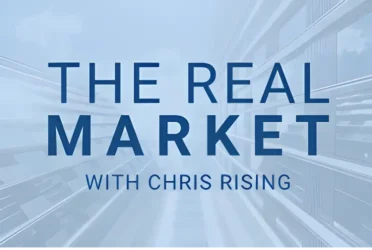 Podcast
Podcast